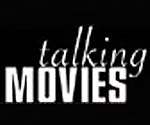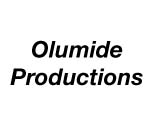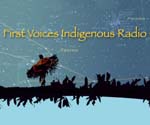-

July, 2010 | BBC - Tom Brook
Tom Brook interviews Sting about 2012: Time for Change. Click here to see the video.
-

July 14, 2010 | Frank Digiacomo
Sting is determined to let his freak flag fly. At the premiere of "2012: Time for Change" at the SVA Theater on Thursday, we asked the artist what he makes of criticism that gets leveled at celebrities who express their beliefs on social, political and environmental issues, as Sting does in this film about the future.
"Listen, I'm a tax-paying citizen and I have the right to believe what I want to believe, freedom of expression and all of that," Sting said. "It doesn't matter that I have a few more people paying attention."
Later that night, the Police front man had even more people paying attention during a Q&A that followed the movie. Paul Stamets, a mushroom expert who was also on the panel, showed the audience a bag of fungi that, he explained, could survive in salt water and potentially lessen the toxic effects of the BP oil spill. "Nice to meet you. Give me that," said Sting, who sat next to Stamets, as he grabbed the 'shroom stash. He then asked: "Can you smoke it?"The wedding party's over, but political insiders are still marveling at the union of longtime Hillary Clinton aide Huma Abedin to Rep. Anthony Weiner. "It's a mystery," says one, who notes that, for starters, Abedin is the "model of discretion," while Weiner is her opposite: "the quintessential desperate politician." Still, the source predicts a long marriage because both spouses "won't be home much."
-

2012: Time for Change
Green Carpet Interviews at the '2012' NYC Premiere
Olumide Productions on YouTubeJuly 12, 2010 | Olumide Productions
Olumide interviews Daniel Pinchbeck, Sting, and Joao Amorim on the green carpet at the '2012' premiere in New York on July 8th, 2010. Click here to see the video.
. -

July 12, 2010 | Peter Davis
Going green has been chic for a while and the documentary 2012: Time for Change explores how the planet can grow even healthier, and not explode to pieces like it did in the John Cusack disaster flick 2012.
Filmmaker Joao Amorim follows journalist Daniel Pinchbeck, author of bestseller 2012: The Return of Quetzalcoatl, as he tries to transform the global approach to dealing with the environment and talks with eco-activists like Sting, David Lynch and Ellen Page.
The film had its New York premiere last Thursday at the SVA Theater, hosted by Mr. Sting, Yvonne Force Villareal, Bonnie Young, among others. On a steamy night, the green (of course) carpet was red hot with Donna Karan, Padma Lakshmi and sexy Paz de la Huerta who vamped it up for photographers like a Vargas pinup girl. I can't wait to see Paz in HBO's next big, bloody hit the Atlantic City, prohibition era drama Boardwalk Empire, which premieres September 19th.
-

July 9, 2010 | Jason Kempin/Getty Images
Click here to view the after party photos.
. -

July 9, 2010 | Karin Luisa
Sting was standing close to me (but not too close!) in the lobby of the Chelsea movie theater -- where Daniel Pinchbeck's new film 2012: Time for Change had just premiered --- affably speaking with a couple of fans, a surprisingly slight man in a trim pin-striped suit, attractive with his clean haircut and sweet beaming blue eyes -- and up-close a very welcoming wrinkled and handsome face.
"Can I ask you a question?" I asked.
He bent his face close and smiled.
"Why did you participate in Pinchbeck's film? What compelled you?"
I imagined that this low-budget film would not be able to afford the kind of money Sting would command.
"Oh we were just talking in Paris and..."
"So you know Daniel?" I said, acknowledging that I knew him as well.
"Yes, we have been friends for years..."
"Friends?"
"I''ve been reading his work for many years."
"So is it that one ayahuasca trip you did so long ago that so moved you to take an interest in his work?"
Pinchbeck's first book was about his enlightening experiences doing hallucinogenic drugs, a book that has since become a bible of sorts for the educated spiritually minded. I quickly mentioned to Sting -- to be on the same side of the fence -- that I too had done ayahuasca in a shamanistic ritual in Peru, and that I had found it a powerful experience. "Oh yes the first time, it's always memorable that first time. Wow that first time! I have done it many times since," Sting offered openly, with his gentlemanly smile.
"Many times?"
"Many times!"
"But my question -- may I ask -- is whether it's true."
"True?"
"Well it seems so revelatory, what one intuits with the ayahuasca -- but then afterwards, it fades -- and then one can think it was just a chemical reaction. So can one take what one felt as true?"
Sting laughed. "It's not a miracle drug -- it's not going to change you like a magic bullet. Afterwards, you still have to do the work. That's what this film is about, isn't it? That we all have to engage in the work. Work on problems, take our intuitions and go further. Contribute. It's work. We have to do the work. We are all here for a reason. We all have work to do."
"And you?" I said. "What is your work? I don't know your personal life -- what you engage in --but what would you say your work is? Your music?" "My family," Sting responded immediately. "This is where I am contributing. And yes my music --which..." he grinned with some sort of ironic modesty. "Happens to connect well commercially."
"But do you really feel your music is 'work' in the way the activism in this movie is work -- as a kind of contribution? Or is it just your own thing? The movie was all about efforts made in many areas -- from yoga to roof-top gardens to meditation (with an interview with my favorite -- David Lynch -- uncharacteristically not-chain-smoking -- has he quit?) to currency abolition (some Belgian expert on economy) to mushroom culture to fight oil spills: basically a hodgepodge of enthusiastic interviews about what can be done to raise consciousness before the Mayan doomsday of 2012.
Sting smiled. "Yes, you're right. Music is my own thing. Yes, it's just my own thing. But can we also say that I am a devotional musician. Yes, that is what I am. A devotional musician."
He laughed and I thanked him, and as I walked off to join my friends, he reached out and gave me the warmest sexiest handshake. -

July 5, 2010 | April Streeter
That first movie "2012" was fairly dramatic and yet pretty much only scary until you exited the multiplex. It was just far-fetched enough to make you think it would never happen. Though playing off a similar idea - that some type of catastrophic showdown is coming our way at the end of the current Mayan calendar in December 2012 - this new movie "2012: Time for Change" is actually an animated documentary that takes a positive spin on our joint ecological predicament - positing that an evolution of human consciousness could get us back in tune with nature and make humans more able to be positive stewards rather than wanton destroyers of our world.
Daniel Pinchbeck, the executive producer and author of the 2006 book 2012: The Return of Quetzalcoatl, starts the film detailing his quest to shake free of a depression that dogged him in his late 20s when his disconnection from current culture caused him to become despondent. One way Pinchbeck sought to connect to a higher wisdom was by visiting and participating in initiation rites and psychedelic drug rituals with tribes such as the Bwiti cult in Gabon - Pinchbeck also interviews Sting in the film about the singer's psychedelic experience taking the hallucigenic Ayahuasca in Brazil. One of Pinchbeck's heroes, Terence McKenna, also champions the idea of psychedelic drugs as one way to get people to expand their consciousness in a short period of time.
But the film doesn't really look to drugs to solve our modern ecological dilemma. Instead, Pinchbeck splices archival footage of Buckminster Fuller and his ideas with interviews with futurists such as Barbara Mark Hubbard and Richard Register, mycologist Paul Stamets and water rights activist Maude Barlow, as well as Sting, David Lynch, and actress Ellen Page. It's kind of a weird mishmash, but it works pretty well for me, and here's why. The green "movement" has had to rely on a lot of gloom and doom messaging to try to communicate some of the big problems we face, and with somewhat limited success at sparking deep and lasting change.Somehow, it seems, we are waiting for the technological silver bullets to get us out of the mess we're in. Pinchbeck yokes the techno-prowess to an expansion of consciousness each one of us must undergo - whether through inner quest or simply outer positive action. He also seems to imply that the same interconnection and social networking that the Internet has wrought will serve us well when push comes to shove, whether that's in 2012 or some other future date (like tomorrow, maybe?) That's a message we need to hear more of, as it brings back personal responsibility to the mix as well as emphasizes community, and suggests all of us have a role in our own, and the planet's, salvation.
The effect is to clear the clouds of "nothing I do really matters," if only temporarily. There's no one-size-fits-all solution by the end of the movie, yet there is the lingering sensation lots of people are working on pieces, and that we actually are all in this together. And seeing Sting says he's a "self-declared, card carrying tree hugger" makes up for some of the slightly weird moments of the film - such as a segment that sugested the moment of the jury decision in O.J. Simpson's murder trial was a moment of shared global consciousness. "2012: Time for Change" is by no means perfect, but rather than just leaving you feeling blue, as some of the recent spate of documentaries have done for me, it just could reinvigorate your personal quest for being green, whatever forms it might take.
-

June 3, 2010 I John Hartl
Sting identifies himself as a tree hugger, and describes the psychedelic jungle experience that turned him into one.
David Lynch claims to have lost his anger as a result of years of daily doses of transcendental meditation.
Ellen Page, star of "Juno," describes coming down from a sudden rise to fame by shoveling goat manure. And loving it.
Celebrity testimonies count for quite a bit in the New Age documentary "2012: Time For Change," but the person with the most screen time is Daniel Pinchbeck, author of "2012: The Return of Quetzalcoatl." He's a kind of guide through an 85-minute discussion that touches on string theory, apocalyptic prophecies, cultural shifts and the long-term impact of 1960s protest movements.
It concludes that the planet, running low on water and other essentials, is headed for a crucial time of transformation. But it's not all bad news.
The movie begins at the beginning, with an animated version of a creation myth that includes references to a great storm and a great flood. Evolution is covered in a bone-throwing episode lifted from "2001: A Space Odyssey," and there are hopeful references to Joseph Campbell and Buckminster Fuller (who appears in archival clips).
Like some IMAX documentaries, the picture tries to jam too much information into too little screen time. There's so little breathing room that an episode about worldwide attention focused on O.J. Simpson may leave you scratching your head. (A dubious murder trial will bring us together?)
At its best, it's a thought-provoking examination of some of the same issues explored in "Avatar," "Crude" and Hollywood's bigger-budget 2009 disaster epic, "2012." According to the distributor, all screenings will include panel discussions with members of the film team. -

June 2, 2010
Please click here to listen to Daniel Pinchbeck and Penny Livingston-Stark's interview with Dr. Pat Baccili.
. -

-

June 1, 2010 I Dennis Harvey
Better planetary conservatorship through psychedelics is one message among many in docu "2012: Time for Change." A kind of cinematic New Age magazine flipping through hot-button issues negative (global warming, resource shortages, apocalypticism) and positive (green living, online activist communities), this plug for "conscious evolution" is both glossily crafted and exasperatingly catch-all. Its vegan food for thought has already played one-off gigs with filmmaker appearances. Single-screen Seattle engagement starting June 4 may not spur further theatrical bookings; pic will reach its ultimate audience via DVD and Internet dissemination.
There's a lot of earnest truth to what first-person narrator Daniel Pinchbeck (author of "Breaking Open the Head: A Psychedelic Journey into Contemporary Shamanism") guides us through here. Still, one wishes he were a more probing interviewer or prepossessing camera presence. He seems entirely lacking in humor, as does the film, aside from witty animated segments. The latter primarily illustrate Mayan creation myths suggesting 2012 brings the end of another Earth cycle in which humanity's latest failed form will be destroyed by the gods for showing cumulative disrespect toward the planet itself.
Pinchbeck doesn't necessarily buy into that literally, but uses his admitted personal depression over escalating world crises as a spur to go on a globe-trotting quest in pursuit of good news and bad. The resulting view of a "crisis in human consciousness" sweeps through everything from visionary R. Buckminster Fuller (seen in archival footage) to transcendental meditation to musician Sting (oddly avoiding eye contact) talking about the psychedelically induced "only religious experience I've ever had." (It's even odder when we get a few seconds of Ellen Page saying she recovered from "Juno's" fame-burst by "shoveling goat shit" on a communal farm.)
There are some highly articulate commentators here, including "EcoCities" author Richard Register, who compares good intentions with good deeds. "It ultimately comes down to, are you gonna do something about it?" Register says. That hits a queasy spot, since "2012" casts its net so vaguely wide; it sometimes comes across as an instructional manual for well-off do-gooders who might attend Burning Man in an air-conditioned RV. Moreover, every subject the pic touches on has been dealt with more probingly, at length, by other documentarians.
Nonetheless, "2012" is remarkably tight, considering its wandering focus and whiff of the well-intentioned vanity project. Veteran animator-turned-director Joao G. Amorim, co-lenser Felipe Reinheimer and editor April Merl do a terrific job assembling disparate materials into brisk semi-cogency. Soundtrack is the requisite smart mix tape of global dance/trance sounds. Excellent cartoon segs aside, the pic sports one for-the-books visual grace note: a simple cut from yoga-class stretching to a big cat luxuriantly extending its loins in the wild. -

"2012: Time for Change,"
Jo?o Amorim, Daniel Pinchbeck, and the quest for a new paradigm
Chicago ExaminerMay 20, 2010 I Daniel Godston
2012: Time for Change is a new documentary which presents an optimistic alternative to an apocalyptic vision of the future. Jo?o Amorim is the film's director and producer, and he will be at the Green Festival happening in Chicago this weekend. 2012: Time for Change screens at the Green Festival on Saturday, (and after the screening Jo?o will be joined by Daniel Pinchbeck, Paul Miller, and Michael Dorsey for a Q&A), and at Facets Multimedia on Sunday. Recently I spoke with Jo?o about directing the film, collaborating with Daniel Pinchbeck, ideas about sustainable living, and some of his other projects.
DG: How did you come up with the idea for "2012: Time for a Change"?
JA: I've always had social concerns, as well as the notion that our system is not sustainable. I'd been working with animation for years, but mainly focusing on advertising and kids' shows. In 2006 I was animation director for Chicago 10; it opened the Sundance Film Festival in 2007, and I was nominated for an Emmy for it last year, so that reaffirmed that I could use my skillset in film and animation for a more noble cause than just convincing people to buy useless stuff.
It was right around that time that a friend pointed me to Daniel Pinchbeck's book 2012: The Return of Quetzalcoatl. At first I was dismissive about the whole 2012 idea as New Age mumbo jumbo. But in the end Daniel's book really moved me, and I strongly identified with the idea that we need to reconnect with the natural world, and that our consumer culture had moved us away from any deeper levels of consciousness.
So I eventually met with Daniel, and we agreed to develop a short pilot film around ideas he put forth in his books. This short, Toward 2012, got more than a half a million hits on youtube, and it led us to develop a series of short animated films on consciousness and ecology, which has been recently released on DVD under the title Beyond 2012: Animated Interviews on the Next Age. That series led us to develop this feature, which was made possible by Mangusta Productions, Curious Pictures, and the amazing support of Giancarli Canavesio, our main producer and financier.
DG: What are some ideas presented in "2012: Time for Change" that suggest ways by which we can make our society sustainable, and move toward a goal of regenerative planetary culture?
JA: You can reconnect with nature and with your inner self. We highlight shamanic practices, yoga, and meditation, and many others. Also, we examine a Design Science approach inspired by Buckminster Fuller, doing more with less, and looking at the Earth as an integrated whole system. We also look at urban permaculture, bioremediation of toxified environments, alternative fuels, complementary currency systems, among others.
DG: How did you and Daniel Pinchbeck collaborate on "2012: Time for Change"?
JA: We picked the people whom we wanted to interview together. Daniel had access to most of the celebrities featured in the film, such as David Lynch and Sting, as a lot of them had already read his book. He also was strongly connected with the consciousness evolution people, and I brought a pragmatic design science approach to the table. So in this way we combined practical solutions with consciousness evolution, and created a film that has a synergistical approach to problem solving. We traveled together and put in a lot of time and effort to get the right material.
DG: Who are some other people who helped with the film?
JA: We had editorial reviews, where we and other members of the team helped to mature the film. The editors April Merl and Pedro Tarrag?, animation art director Dustin Lindblad, among others, also made crucial contributions to the film.
DG: What is one way by which Pinchbeck embarked on a "quest for a new paradigm that integrates the archaic wisdom of tribal cultures with a scientific method,? as I read in an interview with him?
JA: We do not negate technology. In many ways the internet is turning us in to a global tribe. So I would say that this retribalization is an example of that integration. Another one would be permaculture, which is an approach to agriculture, housing, sanitation, energy that both draws on ancient knowledge and on design science, therefore integrating the old with the new.
DG: What are some important things that you discovered while filming "2012: Time for Change," which you didn?t know before starting this project?
JA: Oh, there are many things. I certainly learned a lot about bioremediation and cleaning up toxified environments, such as work by Paul Stamets and John Todd. I learned a lot about complemenatry currencies and how money in many ways dictates the type of society we live in.
DG: How did your perspective on money change?
JA: Bernard Lietaer -- who is a central banker, currency trader, and one of the co-designers of the Euro -- is one of the people featured in the film. Lietaer changed my perspective on what is the role of money and how we can change it to create a more equitable society. Our money today -- our conventional money and the Fiat currencies we have -- is essentially Bank Debt. It is created by people, corporations, and governments borrowing money from banks. It is a yang, patriarchal currency that is designed to extract resources to the top. Through interest, it essentially extracts money from the people that do not have a lot of it, and gives the money to those who already have the money. It's a pyramid scheme that values a model for people to live on interest. Our money system does not have to be that way.
DG: What are some solutions to this problem?
JA: There are more yin currencies out there where you can actually have a negative interest rate, called demurrage -- which incentivize people to keep money in circulation, rather than just accumulating it. Then it starts to make sense and act as a medium of exchange.
DG: I?ve read in some interviews with documentary filmmakers about how sometimes they have certain expectations about the film or the subject before it starts, but then something happens during the filmmaking process that takes the documentary in a different direction. Did you experience anything like that, while directing "2012: Time for Change"?
JA: Well, certainly the film developed in a different way than how we had originally had in mind, just by the nature of interviewing someone. You might think you know what you want that person to say, but chances are they will surprise you with something unexpected. Also I think there is a process of becoming more mature about a subject matter, more critical, then there are the test screenings, and people's reactions. If you listen to them, you will have to certainly make some changes as well. So yes, the film is different than what we had originally planned. From a pragmatic standpoint, I tend to see it as a survival manual for the 21st Century.
DG: What are some things that you hope people will learn, while they're watching "2012: Time for Change"?
JA: I think that will be different for each person, but I hope it instigates people to act -- to help them see that we do not need to create a movement, that it is already there, and that they just need to join. To make a change in their lives, and not be afraid of change. It is through change and crisis that we evolve. So in many ways it is a call to action.
DG: How would you say this film relates to the trajectory of your oeuvre?
JA: In 2000 I directed the award winning animation short: Don't Get Charged Up (about recycling batteries). I also worked as an animation supervisor on Bob Young's Human Error, which was a Sundance selection of 2004, and that has a post-industrial, post-apocalyptic quality. Then came Chicago 10, which tells the story of the Chicago 7 and their struggle to peacefully protest the Vietnam War during the 1968 Democratic National Convention held in Chicago, and their infamous trial in 1968. I also directed a series of shorts with strong eco-social content -- for both the Buckminster Fuller Institute, and for our animated series on consciouness and ecology entitled Beyond 2012.
DG: What film projects are you working on now?
JA: I am currently working on the preproduction of three films -- Gaia and the Last Forest, Archaic Revival, and Ponto Zero. Gaia and the Last Forest is an animated journey that tells the story of a urban girl who is forced to move to the last piece of forest in the world, after her parents die in a mysterious accident. Archaic Revival, which essentially is a sequel to 2012: Time for Change, focuses on consciousness expansion and our historical relation to entheogens. Finally there is Ponto Zero, which is a film with actress Alice Braga narrating, and looks at viable regenerative solutions for the developing world.
DG: Are you working on any other projects?
JA: I'm also leading a permaculture project in Brazil called Ciclo Sustainable; we are starting to offer courses and retreats there. -

Temendo o fim do mundo em 2012
document?rio de Jo?o Amorim apresenta alternativas ecol?gicas para uma vida sustent?vel
OGlobo.comMay 16, 2010 I F?tima S?
O cineasta Jo?o Amorim, filho do ministro das Rela?es Exteriores, Celso Amorim, j? dirigiu comerciais para a BMW e a Panasonic, olhava o movimento new age com a maior desconfian?a e achava que document?rio ambiental estava fadado a oscilar entre a cat?strofe e a pieguice. Hoje, ? s?cio de uma produtora de v?deos s?cio-ambientais ("Postmodern Times"), fez da prega??o contra o consumismo uma bandeira, medita todos os dias e comanda um projeto de permacultura sustent?vel no centro-este do Brasil (Ciclo Sustainable). Tudo isso enquanto roda festivais com seu mais novo projeto, "2012: Tempo de mudan?a", que ser? exibido no Chicago Green Festival, no pr?ximo fim de semana, e deve estrear no Brasil no segundo semestre deste ano.
Resultado de 500 horas de imagens, anima??o e mais de 200 entrevistas, o filme, de 85 minutos, traz depoimentos contundentes de David Lynch, Sting, Ellen Page, Gilberto Gil e Terence McKenna, entre muitos outros, falando de suas experi?ncias com medita??o, ayahuasca, projetos sustent?veis, contracultura, expans?o da consci?ncia. Misturando a sabedoria de culturas ancestrais com as possibilidades da tecnologia, o filme apresenta alternativas ecol?gicas - e muitas vezes surpreendentemente simples - para produzir energia, reciclar lixo, regenerar o solo, reaproveitar ?gua, gerar alimentos mais saud?veis. Em "2012: Tempo de mudan?a", Jo?o, que foi indicado ao Emmy pela anima??o de "Chicago 10" (dirigido por Brett Morgen), segue o jornalista americano Daniel Pinchbeck, autor do bestseller "2012: The Return of Quetzalcoatl" e considerado por muitos o novo pai do movimento psicod?lico. Daniel procura mostrar as armadilhas do nosso atual modelo s?cio-econ?mico e sai em busca de uma nova cultura, baseada em princ?pios ecol?gicos e solid?rios, por v?rias partes do mundo, do Rio ao Jap?o, onde projetos assim j? est?o em pr?tica, com ?timos resultados.
- Depois de ler o livro do Daniel e entrar em contato com v?rias pessoas, eu, que era muito c?tico, fui mudando completamente minha maneira de pensar e viver - diz Jo?o, que s? usou baterias recarreg?veis durante as filmagens. - Por mais complexos que possam parecer os nossos problemas, as solu?es para eles muitas vezes s?o simples. E a gente mostra isso. Pode-se construir sem agredir o meio ambiente e reaproveitar recursos de maneira racional. D? pra coletar a ?gua da chuva e us?-la para abastecer pr?dios de at? quatro andares ou fazer hortas comunit?rias nos terra?os dos edif?cios, por exemplo. Por toda parte, j? h? muita gente engajada na produ??o de uma sociedade regenerativa. -

April 08, 2010 I Gar Smith
Last summer, the blockbuster disaster flick, 2012 asked the question: ?How would the governments of our planet prepare 6 billion people for the end of the Earth?? Hollywood?s answer? ?They Wouldn?t.?
2012: Time for Change, is an eco-sequel that challenges this recipe for disaster. Time for Change sees the Mayan Calendar?s prediction of imminent doom as an opportunity for transformation, not trauma.
The film?s ?agent evocateur,? New Age journalist Daniel Pinchbeck, guides viewers through his personal encounters with psychedelics (from ingesting iboga in Gabon to downing ayahuasca in Brazil) and spends the better part of the film criss-crossing the globe to interview a host of 2010 positivists ? shamans, scientists, inventors, yogis, permaculturists, Native Americans and Berkeley?s own Richard Register. Celebrities Sting, David Lynch and Ellen Page also chime in with Sting praising ayahuasca and yoga, Page celebrating the earthly joys of shoveling goat-shit, and Lynch (predictably) talking up the benefits of Transendental Meditation. (Too bad the filmmakers weren?t able to fit in an interview with John Cusack.)
The film?s first order of business is dealing with the Mayan and Hopi myths that echo the Old Testament stories of human wickedness swept away by a holy flood. Both the Hopi and Mayan lore forwarned that 2012 would be a date of high danger. Scientist Michio Kaku observes that 2012 could see a Solar Maximum that could dissolve the electronic glue that holds modern society together. A radical economist predicts 2012 will see the collapse of the world economy, triggering food riots, a US tax rebellion and civil war.
In the near-term, of course, we face hunger, war, and climate change. Canadian Maud Barlow also warns that ?water is the next oil? ? a precious resource that already is being claimed by corporations and Oilman T. Boone Pickens admits to buying up water rights in Texas and explains: ?Do you charge for air? Well, of course not. They say you shouldn?t sell water. Well, OK. You just watch what happens.?
The belief that Jesus will return or that benign aliens in UFOs will save are cop-outs, the filmmakers argue. There is no ?personal sovereignty? when we forfeit our sense of responsibility for our own time and our own actions. Terence McKenna, author of Mind and Time, Spirit and Matter, puts it squarely: ?Western civilization, at this time, is a loaded gun pointed at the head of this planet.? But, as Sting points out, ?apocalypse? doesn?t mean disaster or oblivion; it means ?uncovering.? And Time for Change reminds us that one of the things we need to uncover is the simple lesson: We are a part of nature; not apart from nature.
A yoga instructor argues that the Western body is literally ?uptight? ? constrained in a ?linear monoculture? of posture. (It?s time to get your curve on.) Sting reflects on finding comfort in difficulty yoga poses.: ?That?s when we make progress. When we put ourselves out of the comfort zone.?
2012 revisits the genius of Buckminster ?Bucky? Fuller, the ?daVinci of the 20th Century,? who showed the practical opportunities of a world designed to do ?more with less.? Thinking outside the box produced alternatives like the geodesic dome and Fuller?s speedy, gymnastically maneuverable Dymaxion car (30 mpg; 120 mph). The clip of Bucky?s car in motion has to be seen to be believed.
Richard Register, founder of EcoCity Builders, decries the lack of attention to cities, ?the biggest thing that human beings create.? Capitalism?s definition of health: ?grow, grow, grow, grow!? Possible to save 80-90% of US energy by redesigning our cities along more compact European models. Rooftop gardens in New York could grow 80% of the Big Apple?s produce. Register laments that his visionary plan for an Berkeley EcoCity was rejected ?because it would mean major changes in land-use patterns.? Interviewed atop the Gaia Building., Register concludes: ?It?s up to people, deep in their hearts, to say: ?I want to build a different world and I?m willing to face some serious change.? ?
Innovator John Todd explains how he uses plants to clean sewage without electricity or chemicals: ?When you assemble17 kingdoms of life, you?ve actually created an eco-machine that?s intelligent. It?s got behind it, hundreds of millions of years of practice.? And Paul Stamets expounds on how mushrooms can help save the planet by breaking down oil, chemicals and pollutants to clean and restore habitat in as quickly as three months. Mycellium has a network like the Internet.
Pinchbeck visits the lab of inventor Ryan Wartena who uses LA tap water to generate the electricity that powers his scooter and marvels at how the Internet has terminally torpedoed the corporate suppression of alternative technologies. Today an inventor can post a demonstration of a :free-energy? device on YouTube and the next day 30 million people can start building their own version. These ?open source? solutions to survival could replace hierarchical, corporate systems that now dominate our lives.
Social transformation is not easily accomplished because is it difficult to grasp emotionally and intellectually. In addition, as one interviewee puts it: ?If you can?t monetize it, it drops out of capitalist monetization.? An economist advises Pinchbeck that we can?t solve environmental or social problems within the current economic system based, as it is, on bank debt and endless borrowing. ?It?s a monoculture and monocultures are not very reliable, stable systems. One unexpected thing and the whole system falls apart.?
Patriarchal societies are inevitably identified with monocultures of ?centralizing currencies? and interest rates that provide a way of ?extracting resources to the top.? What?s needed is a ?diversity of financial tools? that reward actions that benefit health or the environment. One remarkable example is the Japanese fiyakipo ? a time-based credit currency that recognizes the value of voluntary community service and rewards cooperation instead of competition.
Just as there was an Agricultural Revolution, an Industrial Age and an Information Age, Pinchbeck predicts the arrival of a transformative Age of Wisdom. In sympathy with this hope, several interviewees praise the Sixties as the first phase of an ?initiatory process? for the modern psyche: the first step in breaking away from egocentric, profit-driven materialism. What?s now needed is a profound shift in how we conducting ourselves on this planet ? replacing the rituals of an ?unsustainable suicide culture? with lives that respect the needs of others. -

April 04, 2010 | By Hugh Hart
This '2012' avoids catastrophe, uses tech, drugs to get back to nature
The movie "2012" made $770 million last winter by imagining a global apocalypse predicted, some believe, by the ancient Mayan calendar. Working from the same point of departure, "2012: Time for Change" steers the focus away from dramatic catastrophes and toward people who are using technology and psychedelic drugs to repair man's relationship with nature.
The film has a three-day San Francisco run beginning April 9.
Brazilian filmmaker Jo?o Amorim's documentary follows journalist Daniel Pinchbeck as he meets with a wide range of sustainability activists. Author of "2012: The Return of Quetzalcoatl," Pinchbeck says: "We need to recognize that the inertia of our society as it operates now is going to lead to cataclysmic effects, so a critical mass of people need to get fully engaged in changing that."
The varieties of engagement explored in "Time for Change" include actress Ellen Page's visit to a sustainable farm Sting also appears on camera to recount his experience with hallucinogenic plants grown in the Amazonian rain forest. Pinchbeck believes that the counterculture's drug experiments may finally pave the way for some long-term dividends. He says, "In the '60s, the culture freaked out because it was as if drugs broke open this container and all this material from the unconscious came rushing in, but people didn't have the elders or wisdom to integrate the material."
Pinchbeck hopes the film helps trigger an enduring shift in awareness. "Jo?o's film clarifies issues facing our planet, and I think it will awaken people. Because more people now have gone through their initiatory process, some of this consciousness is now re-entering the culture in a more subtle, mature way."Yale films educate about environment
Sixteen days before Earth Day, Yale University launches the 2010 Environmental Film Festival. Beginning Tuesday, the festival will showcase eight features and 12 short films.
Topics include penguins, gas drilling in the Catskill Mountains, over-reliance on soybeans, bear hunting, Dumpster diving and arsenic-laced water.
The opening night entry, "Houston We Have a Problem," critiques Texas' oil industry.
Festival Director Eric Desatnik says, "Our mission is to capitalize on the power of film to educate the public about critical environmental issues, to encourage environmental stewardship, and to incite change."Indie film distributor's advice: Keep it simple
"I am not a very good prognosticator, but I am a very good adapter," says Mark Urman. That has served Urman well. A longtime indie film player, Urman co-founded THINKFilm, where he produced Oscar-winning documentary "Born Into Brothels" and three other nominees. He left in 2008. Urman now runs distributor Paladin.
Staying afloat in a volatile market, Urman likes to keep it simple: "I don't own a corporate jet. I don't own a corporate bicycle! And I don't need a 10-year plan. We can be flexible, we can be limber as the business changes, as the films change, as the economic models change."
Surveying the collapse of specialty film companies, Urman says, "The drunken-sailor days of independent films are now fewer and far between. If you have a movie where everybody dies at the end or it's dark, depressing and stylistically innovative, you have no business spending the kind of money that requires you to sell it to everybody."
Paladin has released "Disgrace" John Malkovich, "The Loss of a Teardrop Diamond" with Bryce Dallas Howard and "The Greatest" with Pierce Brosnan. This summer, Paladin will distribute "Great Directors," featuring interviews with Bernardo Bertolucci, Agn?s Varda and others. "I can't promise my partners that their film will make a lot of money," Urman says, "but I can promise that it will make a lot of noise and get on the radar. It will exist." {sbox} -






















